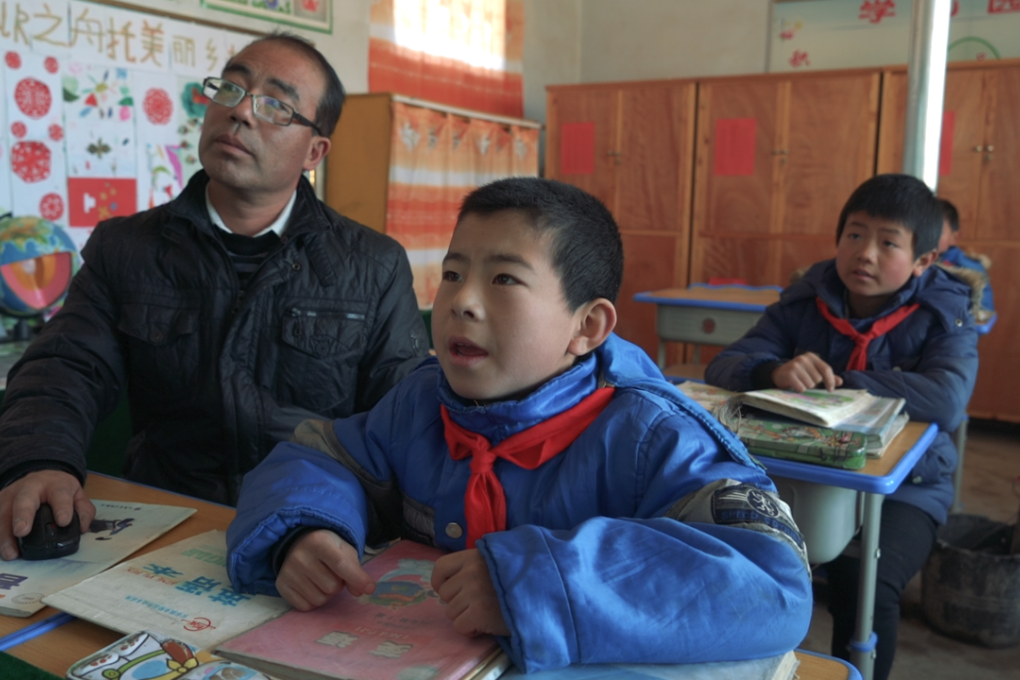This remote Chinese school has just three students. But with live streaming technology, they share a classroom with hundreds
Chinese government funding technology initiatives aimed at narrowing the gap between the quality of education in rural and urban areas

Ten years ago, the grounds at Lumacha primary school in remote Dingxi, a farming village in the mountainous region of China’s Gansu province, overflowed with 300 students during class breaks. Today the schoolyard is a lot quieter: there are just three students.
The plummeting student population is a consequence of China’s urban migration, with millions of rural residents having moved to big cities over the past decade in search of higher paid jobs – most taking their kids with them.
Lumacha primary school is one of over 1,000 rural schools in the province that have less than five enrolled students, but as long as one student remains enrolled in the school, it has to stay open, according to Feng Ping, Lumacha primary school’s headmaster.
Now, thanks to high bandwidth internet technology, the classrooms at Lumacha and other schools in the northwestern part of China are no longer quiet – except that the chatter is coming across a live streaming network that connects hundreds of students spread across a vast area of China’s country side.
As part of Chinese president Xi Jinping’s goal to eradicate poverty across the nation by 2020, the central government has funded initiatives aimed at narrowing the gap between the quality of education in rural and urban areas. In February Beijing authorities announced they would boost internet speeds in rural schools so they are on par with major cities within two years, with China Unicom, the country’s second-largest mobile network operator, providing 100 Mbps cable service to provincial schools.
Technology development has also been a priority for the central government, with the goal of improving the country’s living standards. At the Two Sessions meetings this week Chinese premier Li Keqiang called for the strengthening of China’s basic research capabilities, including the launching of a number of science and technology innovation programmes, building national laboratories and encouraging corporations to spearhead similar innovation.